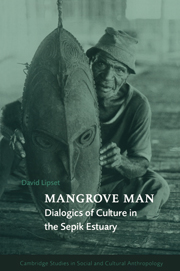Book contents
- Frontmatter
- Contents
- List of illustrations
- List of tables
- Acknowledgments
- 1 Introduction
- PART I DIALOGICS OF THE MATERNAL SCHEMA AND THE UTERINE BODY
- PART II DIALOGICS OF THE MATERNAL SCHEMA AND THE COSMIC BODY OF MAN
- 6 A body more carnal
- 7 The sexuality and aggression of the cosmic body of man
- PART III DIALOGICS OF THE MATERNAL SCHEMA IN SOCIAL CONTROL
- Glossary
- Notes
- References
- Index
- Cambridge Studies in Social and Cultural Anthropology
7 - The sexuality and aggression of the cosmic body of man
Published online by Cambridge University Press: 05 June 2012
- Frontmatter
- Contents
- List of illustrations
- List of tables
- Acknowledgments
- 1 Introduction
- PART I DIALOGICS OF THE MATERNAL SCHEMA AND THE UTERINE BODY
- PART II DIALOGICS OF THE MATERNAL SCHEMA AND THE COSMIC BODY OF MAN
- 6 A body more carnal
- 7 The sexuality and aggression of the cosmic body of man
- PART III DIALOGICS OF THE MATERNAL SCHEMA IN SOCIAL CONTROL
- Glossary
- Notes
- References
- Index
- Cambridge Studies in Social and Cultural Anthropology
Summary
Glorious heroism, in which soldiers triumph against insurmountable odds, apparently was not the stuff of premodern warfare in the Sepik region (Harrison 1993c). Instead, warriors were collectively empowered by ego-alien spirits and derived aggression from a complex of ritual, ceremonial exchange, and, not least, art (Bowden 1983). The gender of these “cosmic bodies” was exclusively male. But their magico-religious force did not exalt pristine masculinity (see Gewertz 1988). Carved high up the centerpost of Iatmul male cult houses, for example, was an image of a seated, wooden spiritess, her legs spread apart, giving birth, I must suppose. Except to say that her body was a “grandiose female matrix” from which masculine aggression issued forth, Bateson did not specify what her posture meant (1946: 120). Was this an image of womanhood, and “her” procreative capacities, contained within this cosmic body? If so, then a different image of womanhood impelled the Arapesh cult (Fortune 1939), one that was no less fertile, but in a more literal sense. War parties used to go out from Arapesh villages “to pirate” married women, women who were meant “to replenish the land with children” (Fortune 1939: 26). The women who lived outside communal boundaries were foreigners to this masculine body. Not only that, they were already married. These women were approached through an intermediary, magically seduced, and only then collectively apprehended by the warriors.
- Type
- Chapter
- Information
- Mangrove ManDialogics of Culture in the Sepik Estuary, pp. 177 - 214Publisher: Cambridge University PressPrint publication year: 1997

